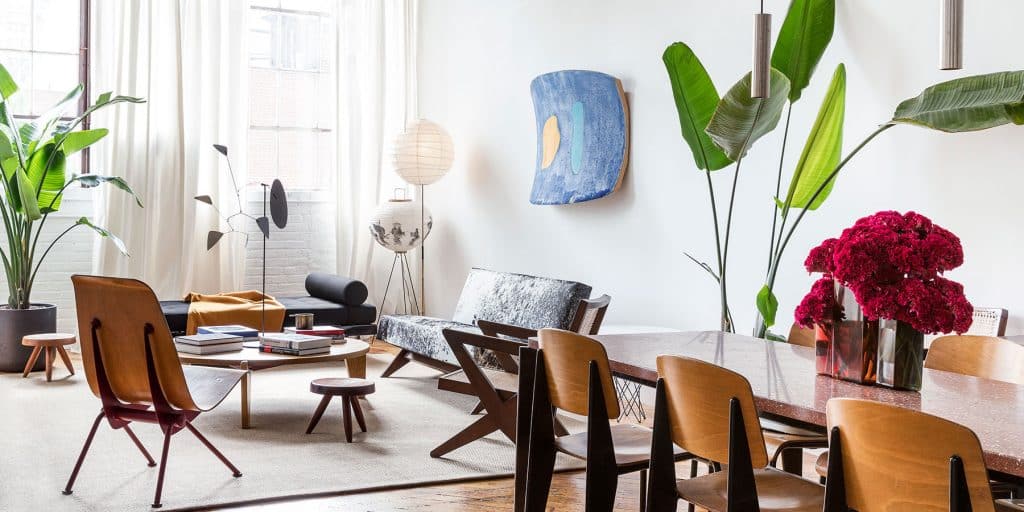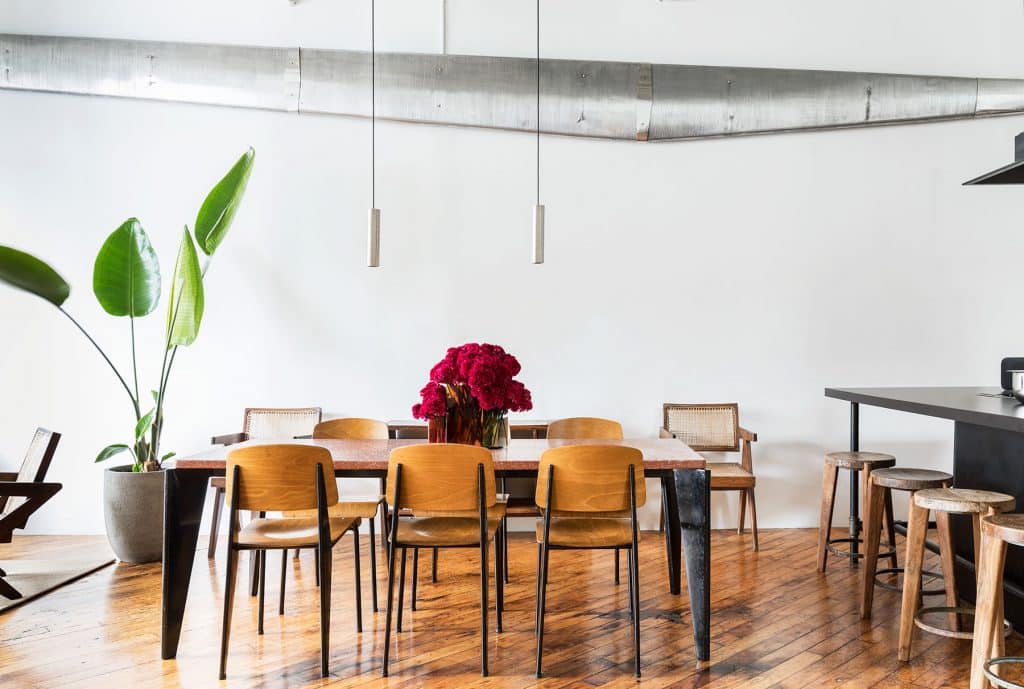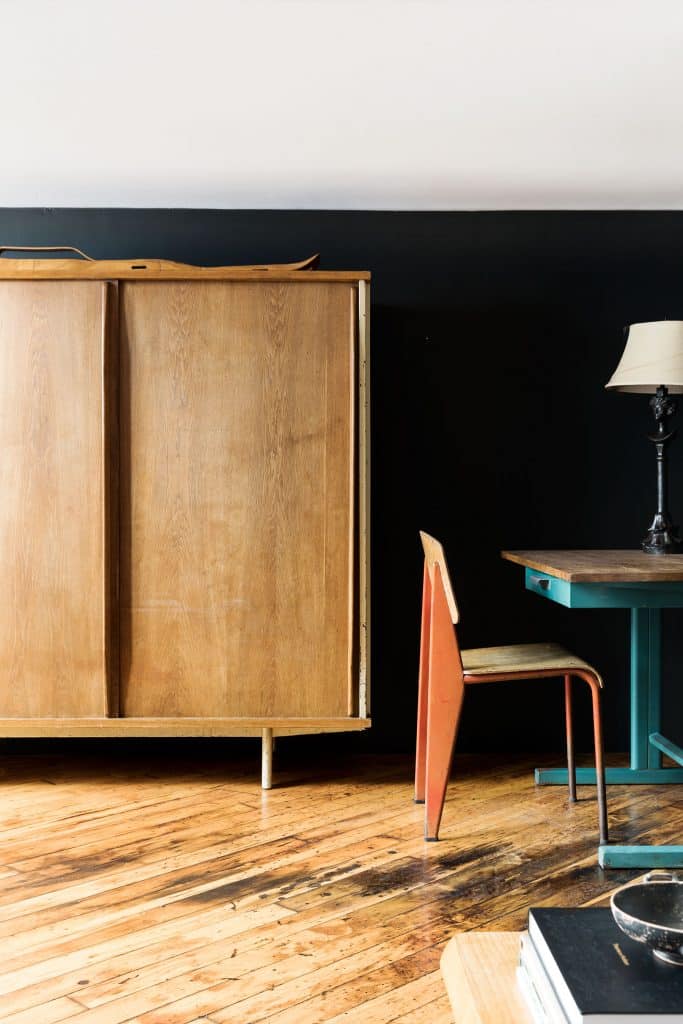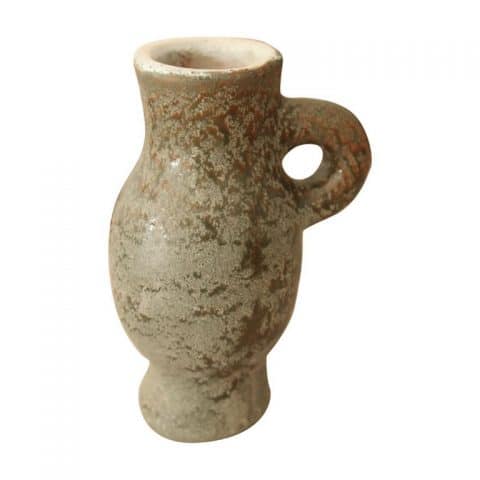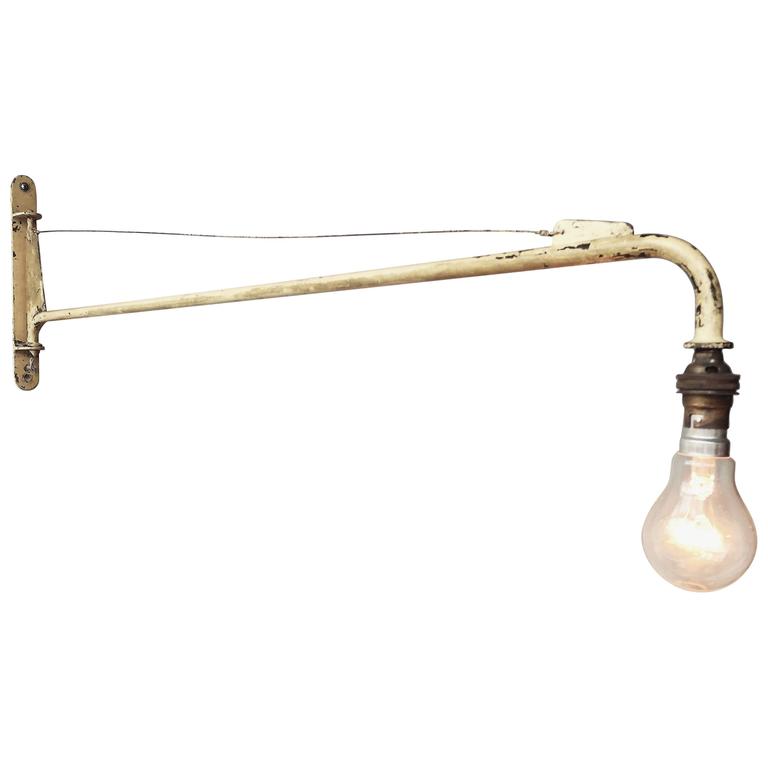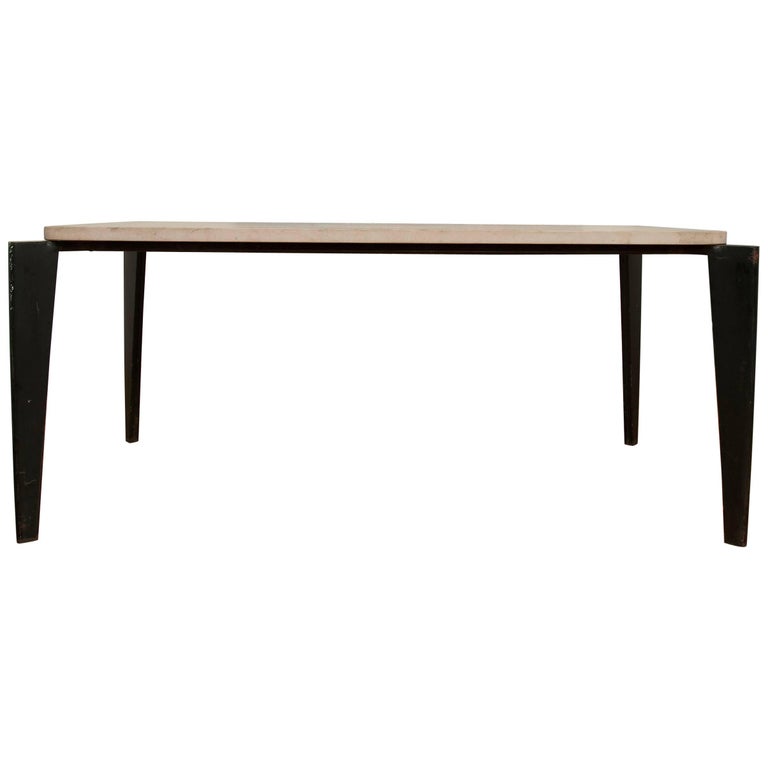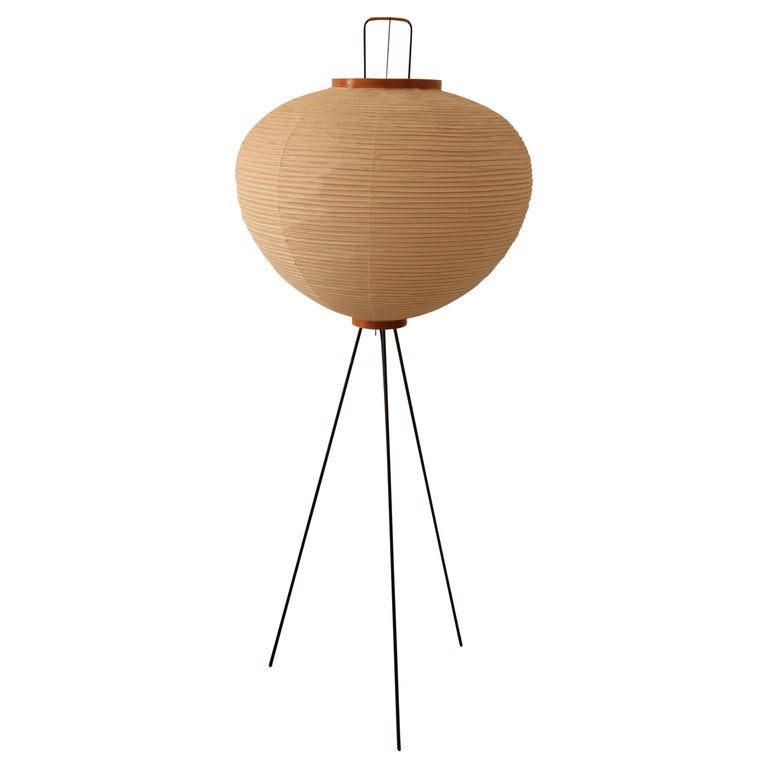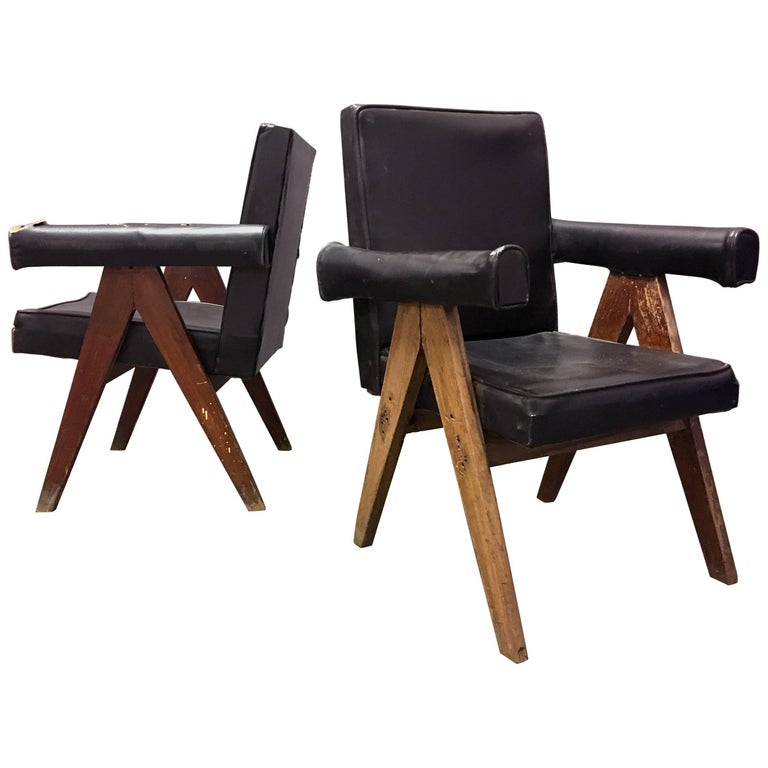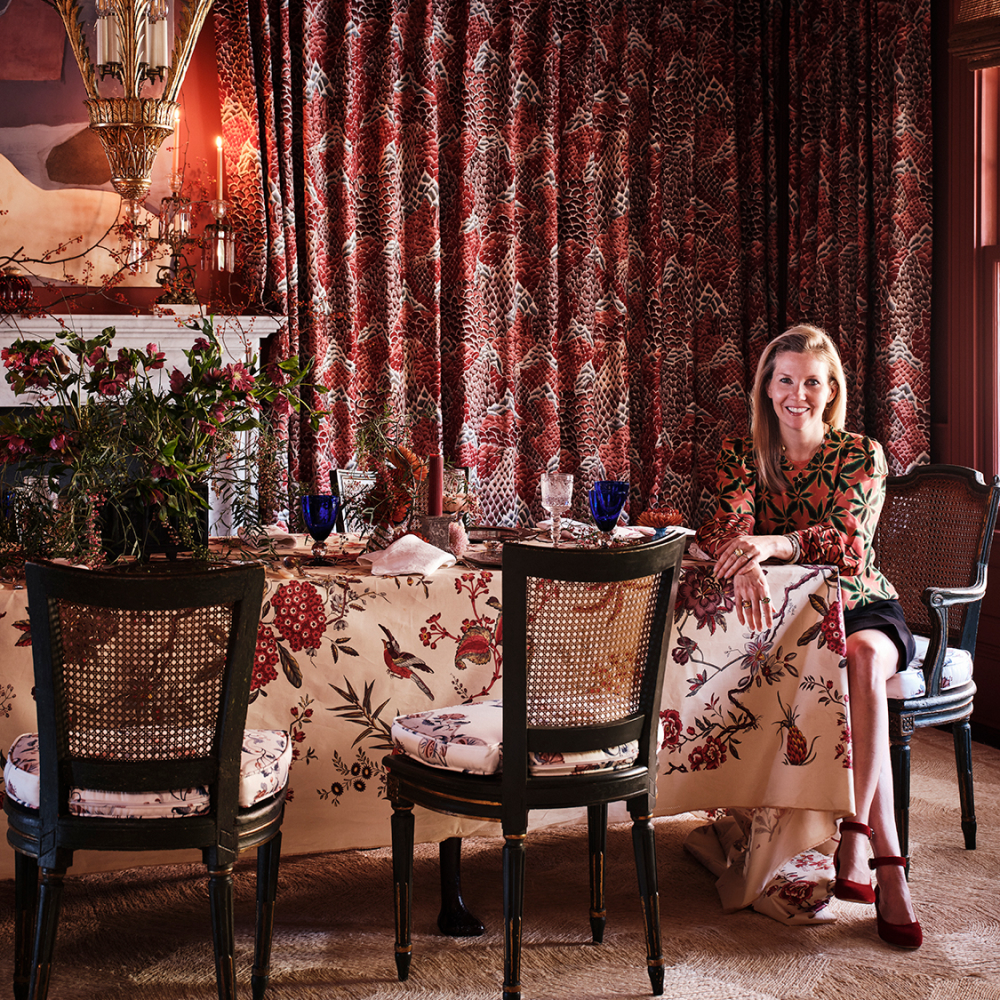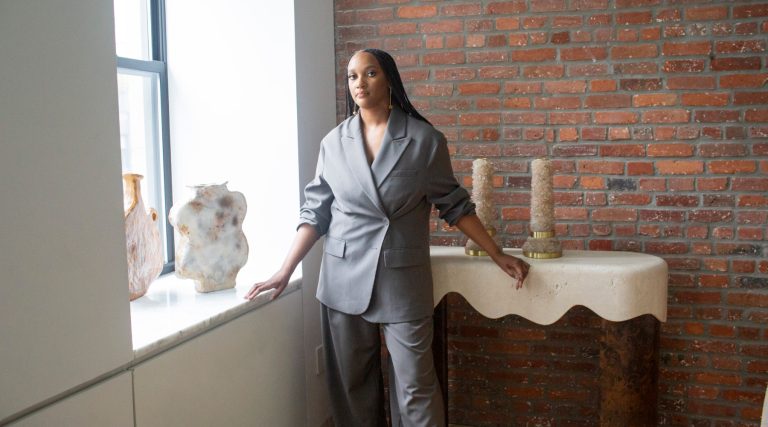
October 7, 2018Jeffrey Graetsch and Ashley Booth Klein, pictured in their Brooklyn apartment, founded MDFG as newlyweds. The Williamsburg gallery features the work of iconic mid-century designers like Charlotte Perriand and Jean Prouvé. Here, Graetsch sits in a Prouvé Antony no. 356 chair. Untitled, 2000, by Günther Förg, hangs above a Perriand Bloc cabinet, which is topped with a pitcher and vase by Georges Jouve. Styling by Gill Hockett Design
It’s surprising that they focused on each other, given everything there was to look at in the room. But somehow, on a first date at New York’s Metropolitan Museum, over showcases filled with Venetian glass by Carlo Scarpa, Jeffrey Graetsch and Ashley Booth Klein learned how much they had in common. He was a fashion photographer whose real passion was collecting modern furniture. She was a Yale architecture graduate whose heart was in buying and selling glassware and ceramics, from ancient to contemporary, and publishing an art and design journal. In 2015, less than two years after their visit to the Scarpa exhibition, they joined forces personally and professionally. Newly married, they founded MDFG, which stands, a bit ironically, for Modern Design Furniture Gallery, four words they believed were overused.
Now, after running MDFG for three years out of their apartment, on Metropolitan Avenue in Williamsburg, they have opened a gallery across the street. Having a toddler and a baby at home precipitated the move. But they also “wanted to make design more accessible,” says the Ohio-born Klein, “and this is the best way to do that. It’s meant to be a nonintimidating space.”

Upside Down, 2017, by Leelee Kimmel, presides over this living space, which contains a Togo sofa by Michel Ducaroy for Ligne Roset, an ETR “surfboard” table by Charles and Ray Eames and an amphitheater seat by Jean Prouvé. A Prouvé Jib swing-arm light is mounted above a Pierre Jeanneret bench.
Indeed, there is nothing pretentious about the street-level gallery, with its white walls and concrete floor, or about its owners. Graetsch, who grew up in Toronto, recalls that during trips to New York in the 1990s, he always stopped at 1950, Anthony DeLorenzo’s shop on Lafayette Street. The experience was “life-changing for me,” he says, because “they let me touch the Prouvé furniture.” He wanted MDFG to be that welcoming.
They’ve been surprised by the strong response, especially the number of walk-ins. “Some people don’t want to make appointments. They’re happier just showing up,” says Graetsch.
Among the couple’s passions is the work of Charlotte Perriand. A type 507 table by the designer stands near the entrance to MDFG. “I like the way construction details become design details,” says Graetsch, who is referring to the table but could be describing how he thinks of the modernist movement itself.
Near the Perriand are pieces by George Nakashima and his daughter, Mira, heir to his studio and his techniques (including construction details that became design details, such as their famous butterfly joints). Graetsch, 42, and Klein, 38, don’t believe the Georges are necessarily better than the Miras. You have to judge them case by case,” he says. “True,” she agrees. “He had the original vision, but some of Mira’s pieces are really superb.” The senior Nakashima’s furniture still commands much higher prices than his daughter’s, but the gap is starting to close — rightfully so, Graetsch and Klein both say.
Another of their passions is Le Corbusier. And a particular focus is the thousands of desks, tables and chairs that the Swiss-French designer created with his cousin Pierre Jeanneret for the government center in Chandigarh, India. Locals took the furniture for granted, Graetsch says, adding, “If it hadn’t been removed in the 1990s by dealers, it would have ended up in the trash. He travels to India twice a year to handpick pieces from valued suppliers. “There are a lot of fakes out there,” he says, explaining why he needs to examine the items in person. The most common pieces — the V-leg armchairs that often end up in collectors’ dining rooms — command about $8,000 each. For now. “I’ve had a lot of conversations with other dealers,” Graetsch reports, “and the consensus is you’re going to be seeing a lot less Chandigarh furniture coming to market.”
One of the couple’s greatest passions, however, is Jean Prouvé. Their store (like their apartment across the street) contains dozens of the designer’s pieces, which cannot be displayed all at once. Among them are chairs made with Jules Leleu for a sanatorium in the French Alps, unrestored but newly reupholstered, as well as tables from the same building.
They also have a trove of Prouvé’s Standard chairs, designed for the University of Nancy in 1934. Graetsch has watched prices for these go from three digits to four digits to five. “Even five years ago, Standard chairs were really easy to find,” he says. “Now it’s getting hard.”

The couple’s son sits in one of the chairs of a Hans Wegner CH410 Peter’s table-and-chair set in his bedroom. Mathieu Matégot’s Dedal shelves are filled with books and toys, and Donald Baechler’s 1995 Mostly Mozart print is mounted above the credenza. The floor lamp is by Michele De Lucchi.
There is no shortage of buyers for their modernist inventory, however. In addition to selling individual works, the couple has filled two clients’ homes (a loft in New York’s Soho neighborhood and a penthouse in St. Petersburg, Florida) with museum-quality pieces. Klein calls them “collections that are lived in.”
Klein had planned to be architect. In 2004, she went to work for OMA, Rem Koolhaas’s firm, in its Manhattan office. But “we were doing big projects, and I was at the computer all day,” she says. “I needed work that was more tactile. And I wanted to be my own boss.” After apprenticing at a few Chelsea galleries, she began dealing in glass and ceramics. Today, MDFG shows a few of her pieces, including bowls by Suzanne Ramié (a cofounder of Madoura Ceramics, where Picasso worked) and a pitcher by Georges Jouve, as well as a circa 1950 ashtray by the same designer on a tubular steel frame by Mathieu Matégot. Klein is also working on a series of rugs by artists. The first, a collaboration with Lynda Benglis, is being made in Nepal and is expected to be available this fall in an edition of 15; a wall in the Williamsburg gallery is waiting for the first one.

The MDFG gallery features the work of the same designers whose pieces furnish Graetsch and Booth Klein’s home. Here, a bookcase by Charlotte Perriand and Pierre Jeanneret stands next to a Jean Prouvé swing-arm light while Perriand stools sit in the foreground.
Klein describes her husband as “an encyclopedia of knowledge of twentieth-century design. He has all those big monographs, which he actually reads cover to cover.” As a teenager, Graetsch says, he would drive to flea markets early in the morning while dealers were setting up, hoping to find overlooked gems with a flashlight. He had many successes. In 2010, for example, he paid $1,500 for a cast-iron bowl he was sure was by Isamu Noguchi. He tracked down the iron foundry in Japan where Noguchi sometimes worked. It took just minutes to authenticate the piece, which he then sold for more than $60,000.
All the while, Graetsch, who came to the U.S. on an artist’s visa in 2003, was building a career in photography. But, he says with admirable self-awareness, “I was working out my insecurities through a lens. Fashion was keeping me really young, not in the best ways.” This realization led to MDFG. “I was looking for purpose, and design always fulfilled that for me.”

Graetsch and Booth Klein wanted their Williamsburg gallery to feel welcoming and nonintimidating. The couple say they’ve been surprised by how many walk-ins they get.
Now, surveying the new space, where he can touch Prouvé chairs to his heart’s content, he says: “This wasn’t just a job — it’s how I wanted to live.”
TALKING POINTS
MDFG’s Ashley Booth Klein and Jeffrey Graetsch share their thoughts on a few choice pieces.
